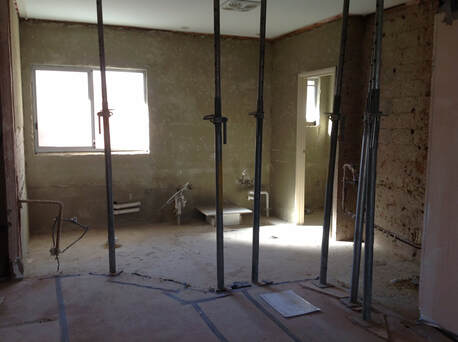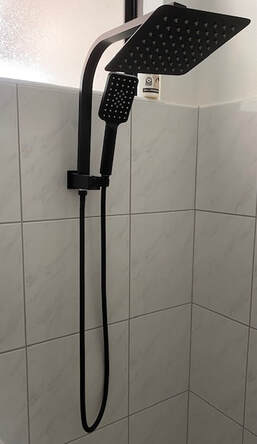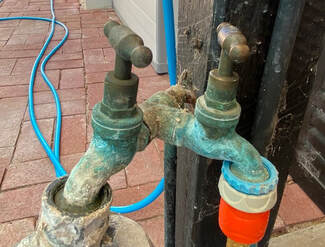"When tackling a home renovation project you want to know you are dealing with a trusted professional crew" There's nothing more irritating than finding out you're dealing with a somewhat shady contractor. Once you're trying to repair or improve something inside your home, you're in need of a trusty, professional crew, not someone who might do some extra damage to your property or take too long to finish the job. Luckily, there are ways one can utilize to handle shady contractors. In the text you're about to read, we'll show you the seven tips for dealing with a shady contractor. So that you don't have to endure all the issues that might occur in such a scenario, stay tuned! Are your expectations for your building project realisticFirst things first, let's see if there's something you can do to prevent putting unnecessary stress on everyone included in the project. In other words, there's something that you can do to avoid calling your contractors "shady". You'll need to make sure that your expectations are realistic: what's possible and what's not, considering the scope of the project and the budget you've prepared. Be upfront about your vision and guarantee everyone's on the same page. Also, you need to understand that potential issues might occur: the completion date is not always set in stone. The more you accept this mode of thinking, the smoother you'll go through the process. Read This Before Selecting Your Home Renovation and Building Contractor. However, we're not saying that you should easily accept that things went wrong beyond your modest expectations. Don't hesitate to talk with your contractor if that were to happen. Now, keep in mind that you should always have a respectful approach. Be open and specific about what you're not happy with and why. Talk to your contractor"You can always try to talk it out and offer to assist if you notice that's necessary" There's no need to emphasize the fact contractors are busy people. Most of them typically juggle 2-3 projects at once, besides having a bunch of responsibilities with every single one of them. If there were to happen a total standstill, that would be no good. However, if we're talking about making slow progress, you can always try to talk it out and offer to assist if you notice that's necessary. For instance, a quick drive to a local hardware store might be a lifesaver. Of course, we don't recommend you do the work yourself; just check in as much as possible. Ask for periodic updates and schedule modifications. Good communication with your building contractors is vital Don't be afraid to talk with subcontractorsWe'll be quick here: don't hesitate to communicate with your subcontractors, too. That's because it's easy for a game of telephones to appear in this situation. Communicating with your subcontractors is a way out of it. You'll be able to fix these issues before they become big. A note though always direct instructions to subcontractors employed by the contractor through the contractor. But, it's ok to chat to subbies and ask them how things are and what problems they are experiencing on the project. Also point out any quality issues you see with their work, then remember to follow up with the contractor so they are aware of the issue also. What about contacting the state licensing board?A contractor without a license is a thing to avoid. Everyone knows that. Therefore, most of them take pride in the fact they're licensed. Let's say your contractors have done their job in a manner you're not pleased with. Or they've done something you disagreed on. In that case, you can always notify them that you'll reach out to the state licensing board. If they get involved, the contractor you've hired risks losing their license. Trust us; they won't have any objections to resolving all the issues ASAP. Read This Before Selecting Your Home Renovation and Building Contractor. Document everythingRight from the very start, once you sign any piece of paper together with your contractor, you should keep your copies. This will guarantee that you'll be able to back up your construction claims if necessary. Also, speaking of documentation, you should always take photos of areas your contractors haven't done a good job with. Make sure you include a date and time stamp. Lastly, here's a suggestion: back up these files digitally. "Keep a copy of all documents." Start with questions for your contractor (not accusations)That's right; your best bet is to begin by asking questions rather than immediately start with accusations. Sometimes, you mightn't know every little detail about the repair process. Asking your contractor to help you do away with any doubts you might have is the best thing to do. Also, asking them while they're still inside your place is ideal. Therefore, plan to be home while your contractor is there repairing the place to kick-start a conversation about this or that issue you've found. Payment holdbackIf you're thinking about tweaking the terms of the contract or modifying milestones, here's the best way to prevent any issues and protect your interests: notify your contractors that there will be a holdback of final funds until everything's done in a manner you find satisfying. Also, the more you're worried about your contractor doing a lousy job, the more you should hold back until you're happy with the work. You'll undoubtedly notice how money changes everything. But important note: you cannot hold back money legally due to the contractor for completed work. This could mean you are in default of the contract giving the contractor reason to terminate the contract. You must always formally notify the contractor of a fault and give them a period to rectify the issue. Always get expert advice. Understanding legal rights when building a new home. "If necessary, hold back the payment." More tips to avoid problems with your building contractorSince we still have some space left in this article, let's see how you can prevent dealing with a shady contractor in the first place. Try to be nice Since finding good contractors is difficult, you'll need to maintain a good working relationship with them. Once you do find them, that is. Therefore, try to be friendly right from the start, and you might find yourself a renovation partner for life. Common Issues Faced when Monitoring Contractors Make sure "everything's there", in the contract Anything you desire done should be in the contract: the labor, the appliance installations, electrical work, etc. Don't be afraid to be overly detailed. It's better to do that than end up with something you didn't want. If you have a specific vision, make sure that it's in the contact. Home build and renovation contracts part 2 - the rules of the project Is your contractor insured and bonded? Here's why this is important: if your contractor isn't insured, there's nothing you can do if things choose to turn awry. For instance, the state you're a resident of can't protect you in that case. However, if they're insured, you'll have a whole palette of options to choose from. Also, if your contract is "bonded", your lender will help you recover the money they've taken from you. Final thoughts on dealing with a problem contractorThat's all that we've prepared for today on the subject of dealing with a shady contractor. Now you have a set of tips ready once things turn ugly. However, we're hoping you won't find yourself in a situation where you need to use them. Until next time, read a little about various home improvement tips! AuthorMacaulay Lanford is a freelance blogger in love with everything that's got the tiniest bit to do with home maintenance. Much of his work can be seen at usmovingexperts.com Want more expert advice to help you design, build and renovate your home?Paul Netscher has written 2 easy to read books 'An Introduction to Building and Renovating Houses - Volumes 1 and 2'. An Introduction to Building and Renovating Houses Volume 1 deals with Hiring Contractors, Managing Construction and Finishing Your Home. and Designing your ideal home Volume 2 deals with Finding Your Ideal Property and Designing Your Dream Home. ("Great for those that DIY. Very helpful in home renovations!" said a Reader on Amazon.com 5*****) These books are available from Amazon and other online bookstores in paper and ebook. This article is a guest post and the owners of this website take no responsibility for the content or it's originality. The website publishes this article in good faith with the undertaking from the author and supplier that the content has not been plagiarised. Please report any errors in the article to the website owners. Should you prove the content is not original the article will be immediately taken down.
2 Comments
"Some simple plumbing upgrades can help you save water." When conserving water, many think of taking shorter showers, turning off the faucet when brushing their teeth, and using a low-flow shower head. These are all great ways to conserve water, but some simple plumbing upgrades can help you save water too. This blog will tell you about a few of them. Benefits of Implementing Simple Plumbing UpdatesEven small changes to your plumbing can make a big difference in the value and comfort of your home. Upgrading plumbing fixtures, such as faucets, showerheads, and toilets, can dramatically improve your home's look, feel, and efficiency. Modern technologies like water filtration, leak detection, and a hot water recirculation system can be added to your plumbing system to save water, energy, and money. Not only can these upgrades add value to your home, but they can also make it more comfortable and efficient. Installing Low-Flow Fixtures Installing low-flow fixtures is an easy and effective way to save money on water bills while Using a water heater blanket is another good way to stop heat from escaping and save energy and money. conserving water. Traditional toilets, faucets, and showerheads use much more water than low-flow toilets, faucets, and showerheads. It means you can enjoy the same comfort and convenience without using as much water. Low-flow fixtures come in various styles and designs so that you can find the perfect fit for your home. "Low-flow fixtures come in various styles and designs so that you can find the perfect fit for your home." Replacing Old Toilets Toilets are one of the most common sources of water waste in the home. If your toilet is over ten years old, it will likely use up to twice as much water as a newer, low-flow toilet. Replacing an old toilet with a new low-flow model can save up to 6,000 gallons of water per year. In addition to being more water-efficient, low-flow toilets are quieter, easier to clean, and more comfortable. Bathroom Design Essentials - What You Should Consider When Designing, Building and Renovating Your Ultimate Bathroom - Part 1 Inspecting and Repairing Leaky Faucets Leaky faucets are another common source of water waste in the home. Over time, even a tiny trickle can waste gallons of water. It's crucial to have a leaky faucet checked out and repaired as soon as you can. Plumbers can check and fix your faucets quickly and effectively, so you can start saving water again as soon as possible. "Older plumbing pipes can be a major source of wasted water." Installing Water-Saving Devices Installing water-saving devices is a great way to reduce how much water and energy your home uses. There are many products, like water-saving shower heads and faucet aerators, that can help you save water without affecting how well they work. With a few small changes, you can cut your water and energy use by a lot. Installing a Pressure-Reducing Valve Installing a pressure-reducing valve (PRV) is smart for any homeowner. It reduces the water pressure of your home's main line—typically from 70 psi to 35 psi—and it also helps you conserve water. It's a simple installation for an experienced plumber, and the benefits are well worth it. You won't notice any difference in your showering, water-using appliances, or faucets, but you'll save a lot of water in the long run. Check your water pressure to make sure a PRV is right for you. Upgrading to a Tankless Water Heater A professional plumber can easily upgrade your home to a tankless water heater. Not only will this upgrade save you space, but it will save you money as well. You'll always have access to hot water without having to wait for it to heat up. You won't regret making the switch to a tankless water heater! Read This Before Buying a Tankless Water Heater For Your Home Installing Recirculation Pumps Hot water recirculation pumps can be a great way to save energy and water. By putting in a circulator pump, homeowners can have hot water right away when they turn on the tap. They no longer have to run the water for minutes to get it to the right temperature. A recirculation pump is easy for a professional to install, so you won't waste time or energy. A quick and simple solution to cut down on energy and water waste in your home is to get a hot water recirculation pump. Home Hot Water Systems Replacing Old Plumbing Pipes Older plumbing pipes can be a major source of wasted water. If your pipes are more than ten years old, they may be rusted, cracked, or damaged, resulting in lost water. Replacing old plumbing pipes can help you save water and prevent future problems. A plumbing tune-up includes quickly and easily checking and replacing your plumbing pipes, so you can get back to saving water as soon as possible. Regular Maintenance Regular maintenance is essential for keeping your plumbing system in good working order. Professional plumbers offer full maintenance services for your plumbing that can help you save water and avoid problems in the future. Skilled plumbers can check for leaks in your plumbing system, fix any broken pipes, and replace old fixtures with new ones that use less water. "Conserving water is important for the environment and your wallet." Simple plumbing upgrades can help you save water and money.Conserving water is important for the environment and your wallet. More ways to make your home environmentally friendly. Fortunately, several simple plumbing upgrades can help you save water and money. You can save water without giving up comfort or convenience by doing things like installing low-flow fixtures or replacing old plumbing pipes. Contact a professional plumber today for more information about plumbing upgrades and how they can help you save water. AuthorShelby Bartz is the new Content Editor of Precision Air & Plumbing, a full-service HVAC, plumbing and home performance contractor operating in Chandler, Arizona. Want more expert advice to help you design, build and renovate your home?Paul Netscher has written 2 easy to read books 'An Introduction to Building and Renovating Houses - Volumes 1 and 2'. An Introduction to Building and Renovating Houses Volume 1 deals with Hiring Contractors, Managing Construction and Finishing Your Home. and Designing your ideal home Volume 2 deals with Finding Your Ideal Property and Designing Your Dream Home. ("Great for those that DIY. Very helpful in home renovations!" said a Reader on Amazon.com 5*****) These books are available from Amazon and other online bookstores in paper and ebook. This article is a guest post and the owners of this website take no responsibility for the content or it's originality. The website publishes this article in good faith with the undertaking from the author and supplier that the content has not been plagiarised. Please report any errors in the article to the website owners. Should you prove the content is not original the article will be immediately taken down.
|
AuthorI’m a construction professional, author of several successful construction management books, and a home owner. I’ve made mistakes in construction management, I’ve seen others make mistakes, but importantly I’ve had multiple successful construction projects and I’ve learned from the mistakes. I want to share these lessons and my knowledge with you. Also available from:
Amazon Au, Amazon DE, Amazon ES, Amazon CA, Amazon IT, Amazon FR, Amazon NL, Amazon India and 'An Introduction to Building Houses - Volume 2 Finding Your Ideal Property and Designing Your Dream Home'
Archives
July 2024
CategoriesWe welcome genuine comments, especially comments that add additional information to the subject matter in the article. We however reserve the right to remove inappropriate comments, which includes comments that have nothing to do with the subject, comments that include inappropriate language, and comments that are an advertisement for a product or company, or which include an advertising link. Comments must be in English. We will not enter into discussion on why a particular comment was removed.
|














 RSS Feed
RSS Feed


